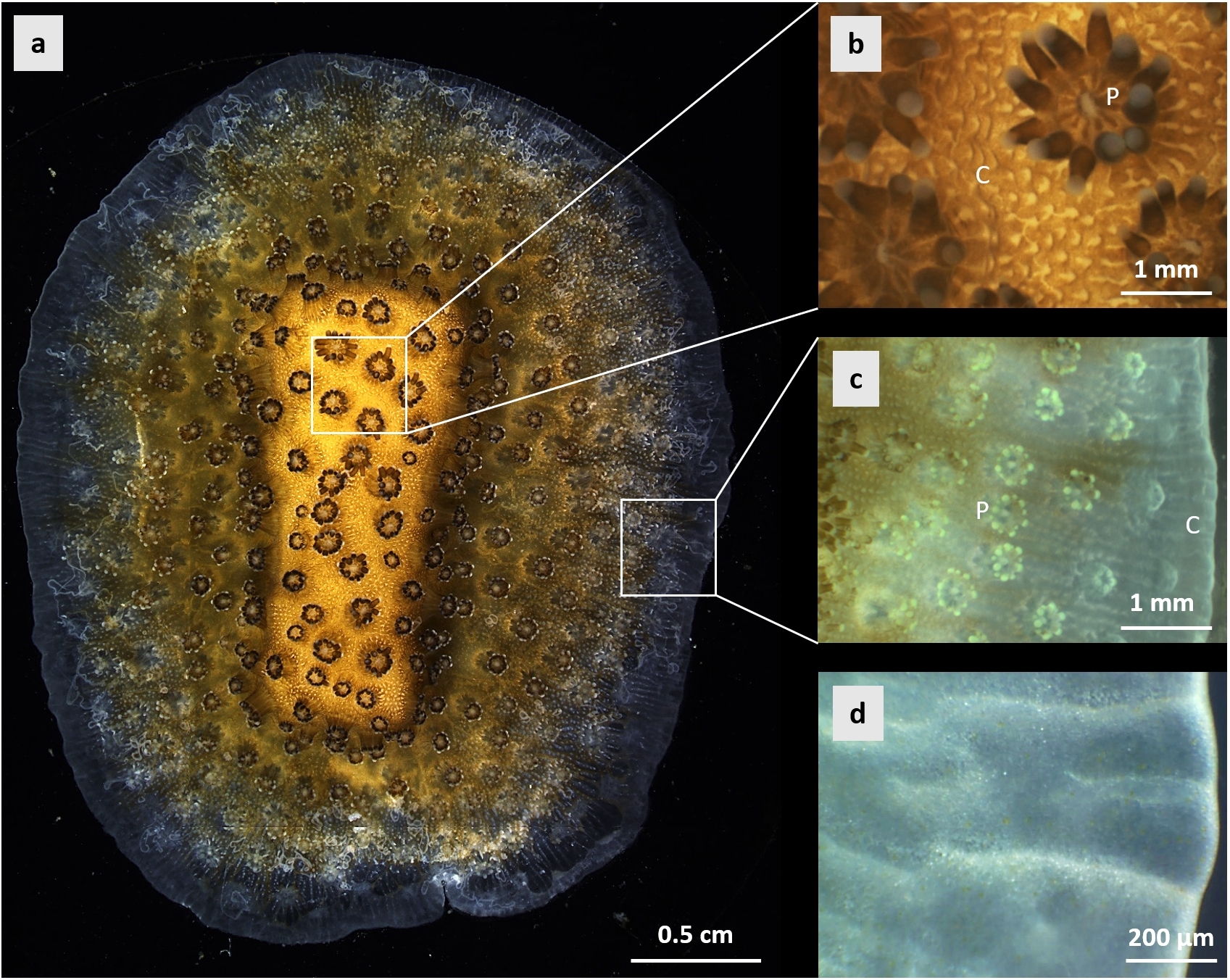Coral reefs, the largest bioconstruction on Earth, are formed by calcium carbonate skeletons of corals through a process commonly referred to as calcification. As increasing anthropogenic carbon dioxide dissolves in the world’s oceans, the pH of seawater decreases (a phenomenon known as ocean acidification), leading to a reduction in the rate of coral calcification. Calcification models often assume a direct relationship between the surrounding seawater and the extracellular calcifying medium (ECM), which is located between the aboral calcifying ectoderm and the skeleton. However, the ECM is separated from the seawater by several tissue layers and the cœlenteron, which contains the cœlenteric fluid. Symbiotic dinoflagellate-containing cells line the cœlenteron and their photosynthetic activity contributes to changes in the chemistry of the cœlenteric fluid, particularly with respect to pH. Therefore, to understand the pH gradients in the different compartments of corals (both cellular and extracellular), the pH values in all compartments, including the cœlenteron, need to be determined. The cœlenteron may indeed play an important role in mediating the transport of molecules/ions between the external environment and the compartment where calcification occurs (i.e. the ECM). The aim of our study was to determine whether dinoflagellate density (based on tissue coloration), light/dark conditions, and decreasing seawater pH could affect cœlenteron pH and potentially influence pH in the ECM in a single coral species, Stylophora pistillata. To accomplish this, we worked with liquid ion exchange (LIX) pH microsensors to measure pH in the cœlenteron under different environmental conditions. Seven samples of S. pistillata grown in long-term coral culture facilities on glass slides at the Centre Scientifique de Monaco were used for this study. For each sample, at least three replicate measurements were performed under all conditions to allow statistical analysis. Our results show that pH of the cœlenteron differs between tissues with high and low dinoflagellate density (HDD and LDD respectively). In HDD tissues, pH of the cœlenteron indeed exhibits light-dark fluctuations due to the photosynthetic activity of the symbiotic dinoflagellates. No such fluctuations are observed in LDD tissues, as the combined photosynthetic activity of the few dinoflagellates present in these tissues is not sufficient to increase the pH of the cœlenteron in the light. We interpret our results in terms of what light and dark exposure means for the proton gradients between the ECM and the cœlenteron and how this might affect calcification.
Physiology in Focus 2024 (Northumbria University, UK) (2024) Proc Physiol Soc 59, PCB032
Poster Communications: Characterization of the cœlenteron pH in a reef coral with microsensors: spatial variability, effect of environmental parameters and relationship with calcification
Lucas Crovetto1, Alexander Venn1, Duygu Sevilgen1, Sylvie Tambutté 1, Eric Tambutté 1,
1Marine Biology Department, Centre Scientifique de Monaco Monaco Monaco, 2Sorbonne Université - ED 515 Complexité du Vivant Paris France,
View other abstracts by:
Where applicable, experiments conform with Society ethical requirements.

